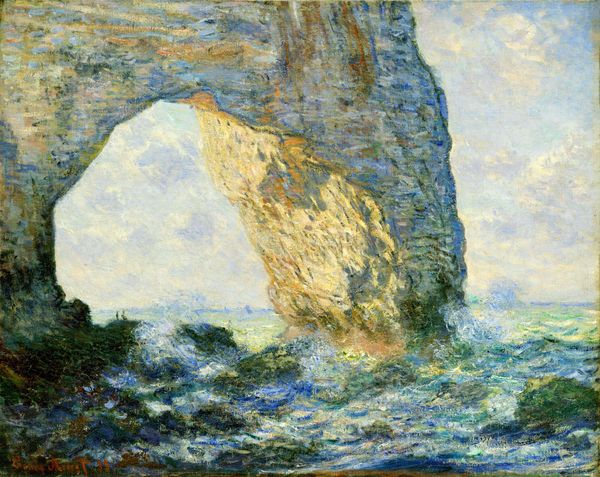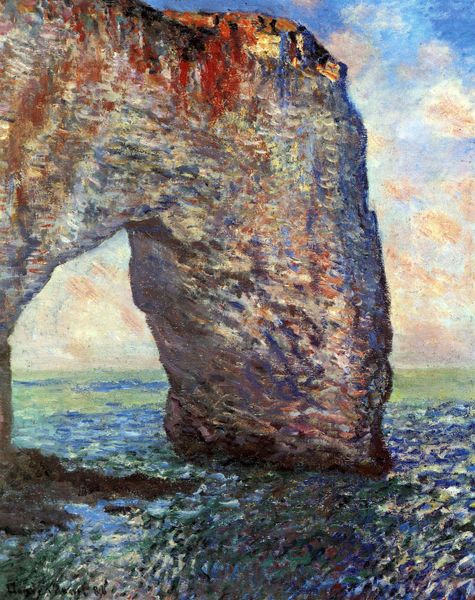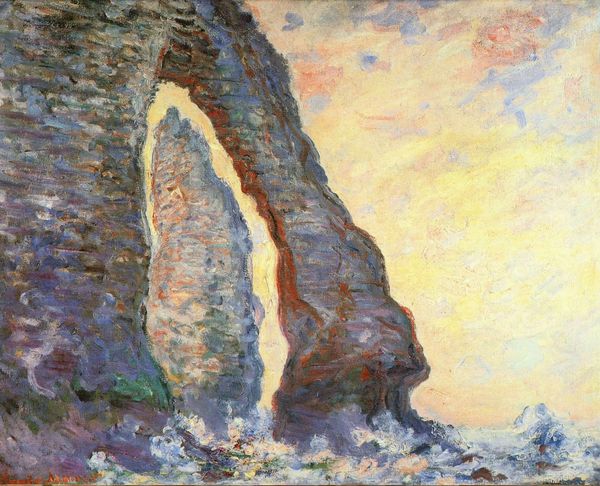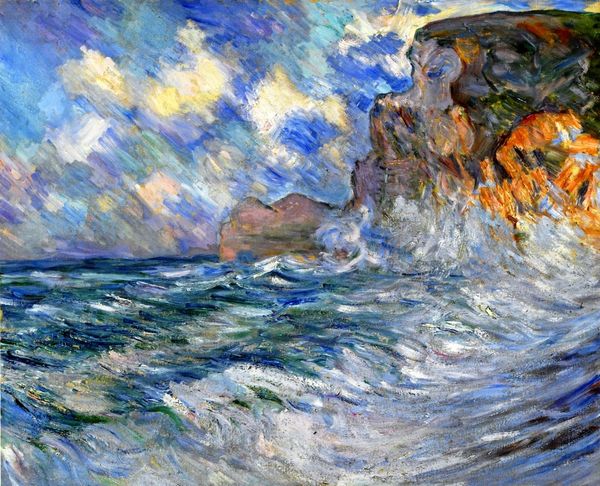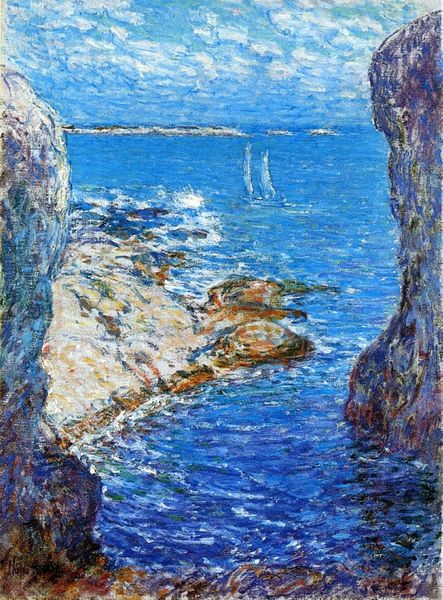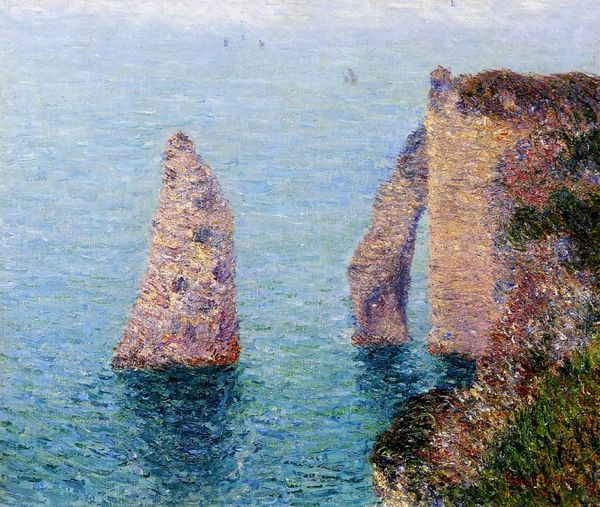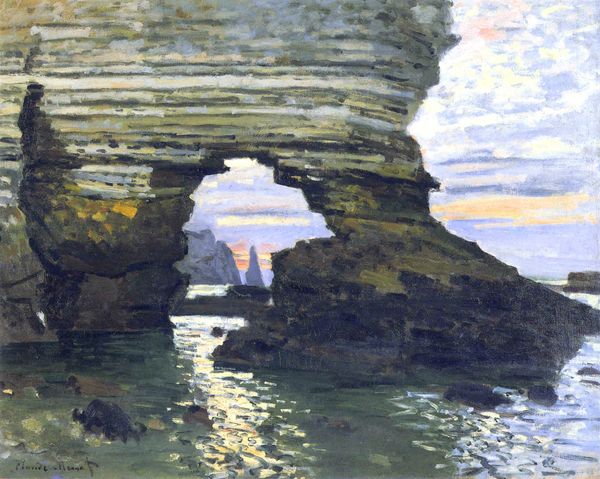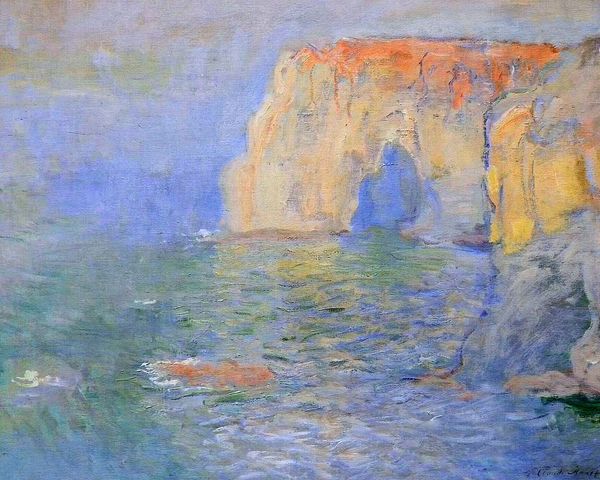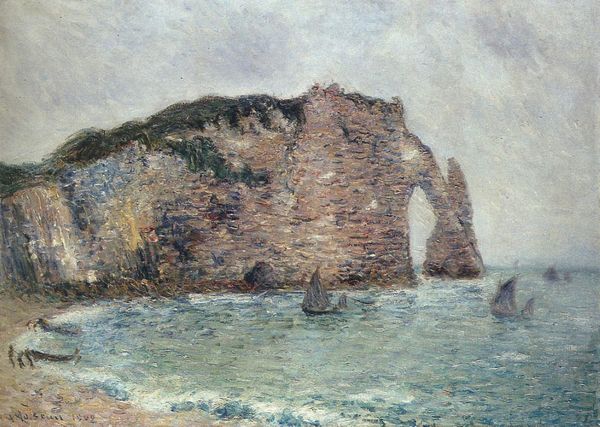
plein-air, oil-paint, impasto
#
tree
#
cliff
#
rough brush stroke
#
impressionism
#
plein-air
#
oil-paint
#
landscape
#
impressionist landscape
#
oil painting
#
impasto
#
rock
#
paint stroke
#
water
#
cityscape
#
sea
Copyright: Public domain
Claude Monet made this oil on canvas painting of The Manneport, a natural arch in the cliffs of Étretat in France. The image creates meaning through visual codes. For example, the jagged brushstrokes and unusual angle of the landscape make it appear imposing, wild, and untamed. In the late nineteenth century when this artwork was created, the French landscape was a popular subject in the state-sponsored academies of art. But Monet's style was radical and new: deliberately unfussy, and more interested in the effects of light and atmosphere than the traditional form. This painting is significant because it represents a break from the conservative values of the French Academy. Monet helped to establish a new, avant-garde art world of independent galleries and critics. To understand this period, historians might consult sources such as exhibition reviews, artists' letters, and sales records. Art is meaningful because it exists within a social and institutional framework.
Comments
No comments
Be the first to comment and join the conversation on the ultimate creative platform.
